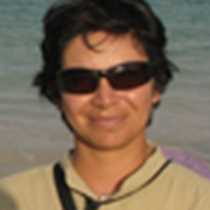Santa Cruz Island
Our journey on the island of Santa Cruz by vsiting the Charles Darwin Research Station (CDRS); we had the great opportunity to explore one of the most renowned institutions in the world dedicated to research and to the preservation of endangered species in the Galápagos. We saw mostly the corrals were the Galápagos giant land tortoise and the Galapagos land iguanas are maintained before their repatriation to their islands of origin; both species were the only herbivores in the Galapagos before cattle were introduced by humans several years ago.
Unfortunately, in the past entire populations of land iguanas and land tortoises were seriously affected by introduced animals and by human activities; now, thanks to the great efforts to preserve the unique species of fauna and flora, the success is visible in the flourishing flora and fauna in each and every one of the islands.
For the afternoon we went to the highlands to visit the giant tortoise’s reserve where some of these wonderful reptiles were found wallowing in the mud ponds. After we encountered the giant tortoises in the wild, our expedition on the island took us even higher and further into the forest, visiting two geological formations known as “Los Gemelos.” These crater-like formations have an amazing ecosystem that surrounds them, formed mostly by the endemic giant Daisy, also known as “Scalesia tree.” This dense forest covered by lichens, orchids and ferns are ideal areas to look for tree finches, vermillion fly catchers and mockingbirds. We were all guided and enchanted by their varied singing, and some of them gave us great photo opportunities.By the end of the day we found ourselves sailing off Academy bay, leaving behind the main harbour in the Galápagos and the charming people that inhabit it, as well.
Our journey on the island of Santa Cruz by vsiting the Charles Darwin Research Station (CDRS); we had the great opportunity to explore one of the most renowned institutions in the world dedicated to research and to the preservation of endangered species in the Galápagos. We saw mostly the corrals were the Galápagos giant land tortoise and the Galapagos land iguanas are maintained before their repatriation to their islands of origin; both species were the only herbivores in the Galapagos before cattle were introduced by humans several years ago.
Unfortunately, in the past entire populations of land iguanas and land tortoises were seriously affected by introduced animals and by human activities; now, thanks to the great efforts to preserve the unique species of fauna and flora, the success is visible in the flourishing flora and fauna in each and every one of the islands.
For the afternoon we went to the highlands to visit the giant tortoise’s reserve where some of these wonderful reptiles were found wallowing in the mud ponds. After we encountered the giant tortoises in the wild, our expedition on the island took us even higher and further into the forest, visiting two geological formations known as “Los Gemelos.” These crater-like formations have an amazing ecosystem that surrounds them, formed mostly by the endemic giant Daisy, also known as “Scalesia tree.” This dense forest covered by lichens, orchids and ferns are ideal areas to look for tree finches, vermillion fly catchers and mockingbirds. We were all guided and enchanted by their varied singing, and some of them gave us great photo opportunities.By the end of the day we found ourselves sailing off Academy bay, leaving behind the main harbour in the Galápagos and the charming people that inhabit it, as well.



